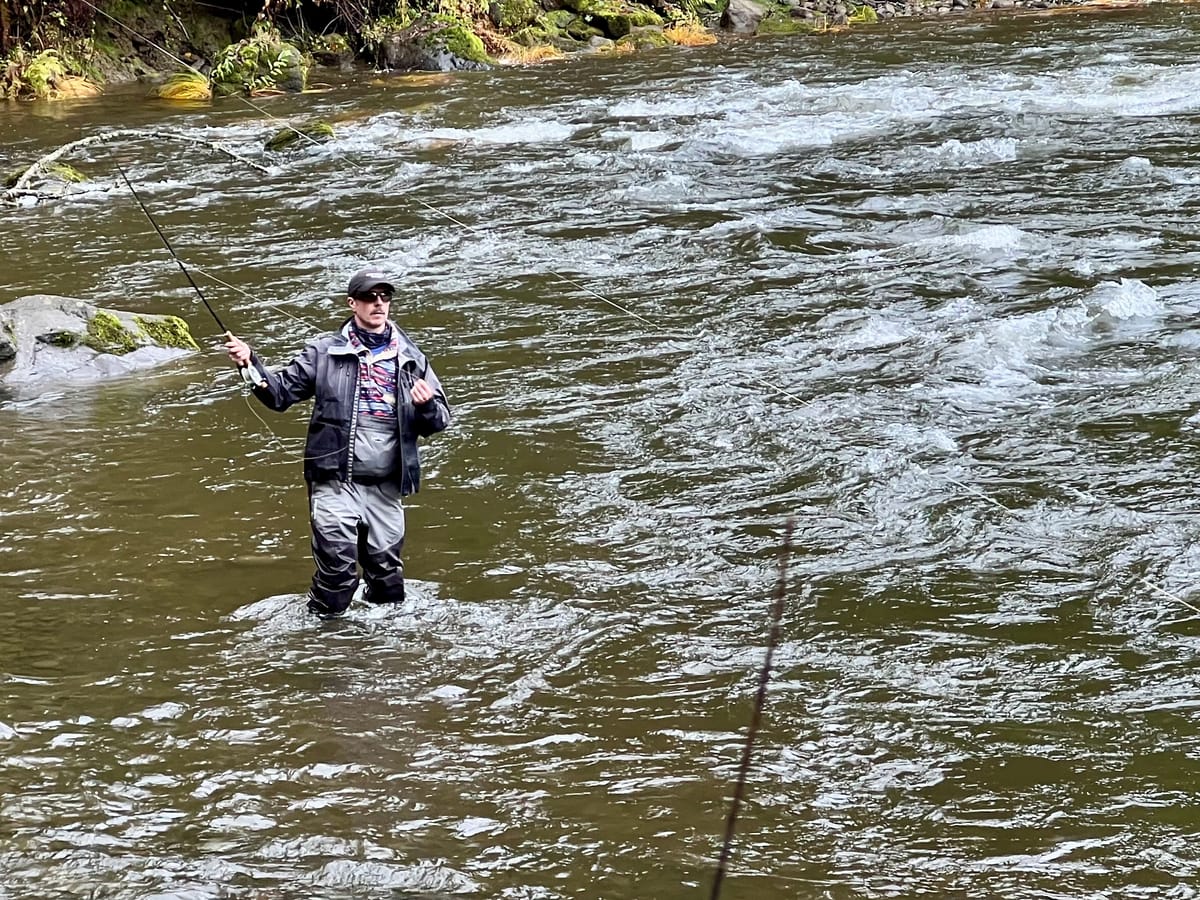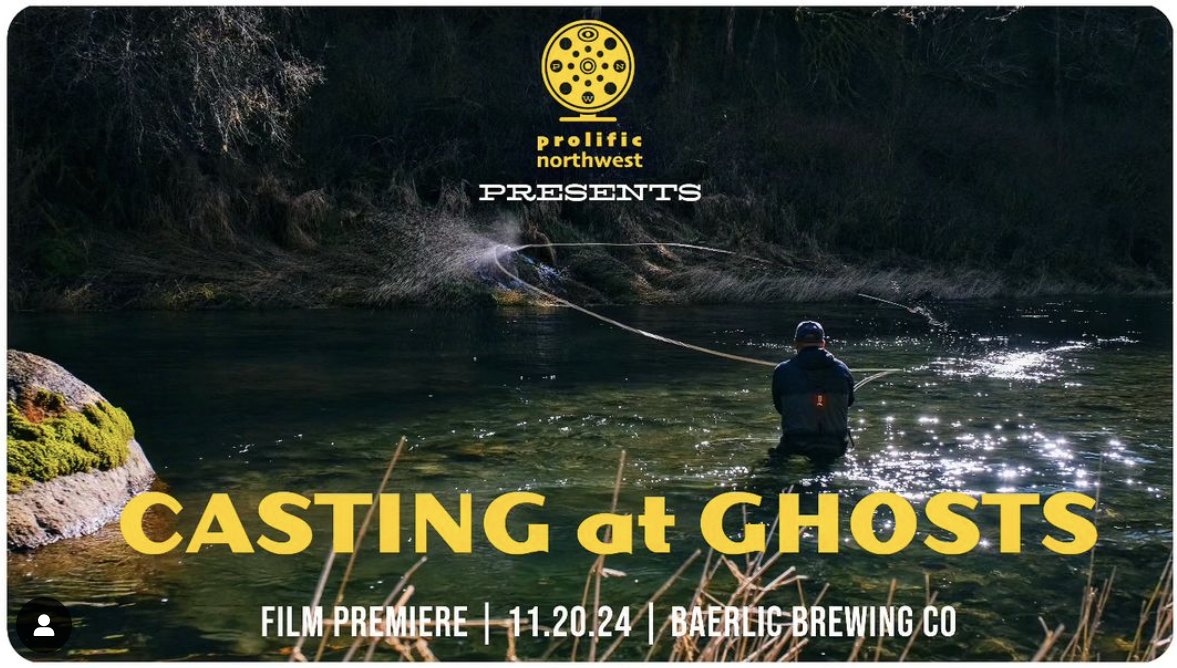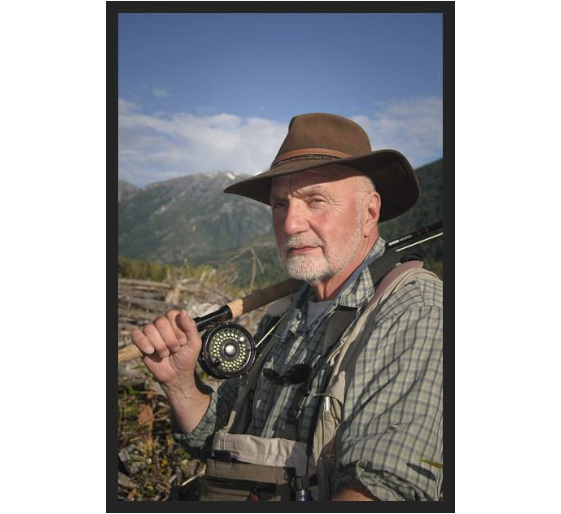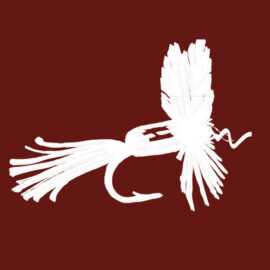A time to mend
If you can manage your line, you can manage your life.

CFS crew: Short one this week, but on an important concept.
The wisest fly-fishing guide I ever knew was a man who lived and died and lived again, the second time to fish. He had a simple mantra:
If you can manage your line,
you can manage your life.
He repeated this every time I blew a cast, or missed a set because I had too much slack on the water, or got hung up with too long a drift. It soothed frustrations, when I had spools of line wrapped and tangled all around the casting deck, and celebrated successes when we got into tough-to-target fish.
The process of managing your line has a simpler term: Mending.
Mending is a term of art in fly fishing that means making adjustments when things aren't quite right. It needs to happen on almost every cast, and as you progress, becomes automatic. It's the little micro-adjustments to the steering wheel you make to stay on the road when you drive.
Beginners looking to lengthen their drag-free drift can slip a few mends into their system to get those final moments where the trout decides drag-free.
If you're fishing downstream, like with an indicator or a wet fly, you can introduce a mend, or a series of mends, to prolong your drift. Huge Fly Fisherman, one of my favorite YouTube channels (get ready for a strong ironic tone) demonstrates here:
Advanced casters can make aerial mends as the line is unfurling on the forward cast, moving their rod hand and pre-mending before the line hits the water, to account for varying currents and obstacles. Here's how that looks, from Simon Gawesworth, one of the greatest fly-fishing instructors:
Here's more on all the different types of mends you can use to make adjustments on the water. They ways of finding a drag-free drift are myriad.

Mending as metaphor
Mending is an activity and a metaphor, which is where our mantra connects.
If you can manage your line,
you can manage your life.
Our lines are constantly flowing along the river, connected to our rods, our purpose.
We mend to improve the design of our intentions, to correct for the chaotic and unpredictable nature of the systems we fish in. The dynamic, kinetic environments even science struggles to predict.
The metaphor hasn't been lost on Hollywood. Check out 2022 film Mending the Line to see how Brian Cox and Wes Studi pass down some old-timer wisdom. It's worth it just to envision Logan Roy casting a fly rod and rowing a drift boat.
Casting at Ghosts world premier

Filmmaker and nature photographer Sean D. Burke is premiering his latest film, Casting at Ghosts, about an Oregon steelhead guide, at Baerlic Brewing in SE Portland on November 20.
It should be a great kickoff / motivator for winter steelhead season. I'll be there, let me know if you want to come along!
Science loves the bowline
For a follow-up on last week's knots discussion, here's what some real-life knot research looks like, this one looking at the tensile strength of various loop knots.

One cool thing they looked at was the heat generated as various knots failed. Link courtesy the ever-amazing engineering and manufacturing minds at Scope of Work.
RIP to another Man of Rivers
Remembering Ehor Boyanowsky, an angler new to me through this obitituary, whose works I'll now be endeavoring to explore based on this passage alone:
As the angler works his way along the river, plumbing the depths with his lure or dropping his fly across the current, in that special time when everything is right, he enters into synchrony with his environment. He experiences the thrill of rhythm sounded out by the rising and dipping of birds, of rustling branches reaching over riverbanks of slowly shifting gravel and earth, and by the myriad life forms under the panoply of moving water. He, himself, is the product of a thousand-year quest. To greater or lesser extent, he is many things in addition to the hunter after his quarry. He is, in the rod he uses deftly, an athlete. If he has built it himself, he is an artisan. If he has created the lure, or tied the flies, or communicated his experience to many others, he is an artist. If he has studied the stream to create these lures or flies, he is a naturalist. If he is thrilled by the wildness that remains, making certain his presence does nothing to diminish the place, he is an environmentalist. If he is outraged by any signs of despoilation he does see and takes any action at all, he begins to repay his debt to nature. He becomes the river's, and in a small but important way, his brother's and his son's keeper. Any one of these alone is worthy of a lifetime's pursuit.

Current Flow State is a weekly newsletter from me, Nick Parish.
If you enjoyed this, please forward it to a friend.
Read our editorial policy or browse the newsletter archives.
CFS Explorer members support and sustain the site, our community. Learn more about membership benefits. If you're getting value from this material, consider becoming a member and giving back.






